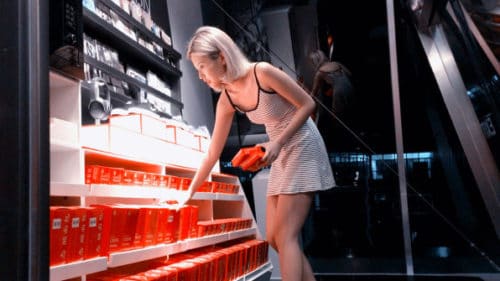“What if” for Aging in Place

Those of us of a certain age grew up expecting that by now we would have Rosie the Robot from ‘The Jetsons’ in our house. And all we’ve got is a Roomba.
~Juan Enriquez
Aging in Place
The suburbs were the American Dream of early 1950’s post World War II generation. Automobile dependent, situated on the outskirts of larger cities, tract houses as far as the eye could see (little pink houses for you and me). The young men (mostly) returning from war used the G.I. bill to buy subsidized low-cost mortgages for returning soldiers, which meant that it was less expensive to purchase one of these suburban houses than to rent an apartment in the city.
Mass produced by developers such as William Levitt (“Levittowns”) in New York, New Jersey and Pennsylvania, these cookie-cutter homes were designed for young families with informal “family rooms,” open floor plans, large backyards, laundry in the basement, bedrooms upstairs, bathrooms on the second floor, two car garages and narrow stairs.
These suburbs fueled the ideal of American Exceptionalism (for some, not all) and became the mechanism by which consumer culture launched the baby boom generation. These little pink houses needed new appliances, automobiles, kids’ toys, upkeep, lawnmowers, the list goes on and on…
The first Suburban Generation / Peter Pan
From 1946 to 1964 this young post-war generation snuggled in their cozy/safe cul-de-sac neighborhoods would reproduce in record numbers. So fertile was this era many of these suburban existences were dubbed “Fertility Valley” and “The Rabbit Hutchs” (Historyhttps://www.history.com/topics/cold-war/1950s). Some 77 million baby boomers would be born–many growing up as the first suburban generation.
Ironically, most of these boomers are now growing older in those same suburbs. The home-setting-features like large sloping lawns, narrow stairways, auto-dependent seclusion, are now becoming liabilities. These once desirable aspects of American Middle-class domestic living are now described as “Peter Pan” for people who think they will never grow old.
The Architecture of Isolation = Innovation & Opportunity “What if…”
What if you lived in the suburbs or rurally, were a baby boomer (includes 70% of boomers) and not excited about firing up 5000 pounds of steel to get a gallon of milk? Imagine instead of going to the store, the store came to you? From a 2017 article in Fast Company by Adele Peters titled: The Grocery Store Of The Future Is Mobile, Self-Driving, And Run By AI, the author describes the future of autonomous mini community grocery stores.

(photo Wheelys)
Moby, a mini store, is autonomous and can be accessed via an app you download to your phone. To open the door simply employ the phone app, a hologram-like AI greets you by first name in a warm and welcoming voice. You shop, scan your items into a smart basket that tracks your purchases and you are billed. No waiting in line, no money exchanged, no contact required, and most of all not having to battle traffic or crowds.
These tiny shops will stock fresh food daily, along with your daily supplies, and specialty orders could be requested ahead of time or delivered by drone to your front door. Autonomous mini stores could be purchased by villages or neighborhood groups–say a Naturally Occurring Retirement Community (NORCs) and employed as a mobile co-op to serve the suburbs.
A company called Wheelys is already developing small mobile coffee carts to compete with big chains like Starbucks. Imagine instead of going to the coffee shop, the coffee shop comes to you!
Art to Go
In Portland Oregon, a very fresh approach to the art gallery is being re-envisioned by artist, Alison Dougherty. Outlier Gallery is a mobile gallery nestled in the back of a large step-van. Clean uncluttered interior with bright white walls and austere seating, the concept emphasizes the art–not the trappings.
To me, Dougherty’s creation has potential for aging adults in the suburbs who enjoy and support the arts. In the new era of COVID19 many older adults are reluctant to go out to public spaces to take it in–Outlier Gallery is a possible solution. Again, “what if” instead of going to the gallery, the gallery could come to you. This idea could even be teched-up to have mobile gallery pods visiting villages for app scheduled showings and wine tasting on a mini-local (safer) scale. Purchases could be made just like the with the AI run stores.
Summary
Two influential Trends shaping society are the demographic transition (20 percent of the population will be over 65 by 2030) and living in the COVID19 era. It has been said if you want a BIG opportunity–find a BIG problem; aging and the necessity of isolation are human dilemmas in search of solutions. The kind of divergent thinking that envisions bringing the store, the coffee shop, the gallery to the client where they are, is in the spirit of building a better mouse trap and will be rewarded accordingly.
________________________________________________________________________________________________
Link
